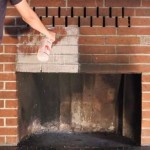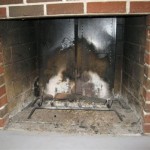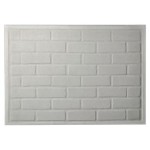Craftsman Style Fireplaces: A Timeless Focal Point
Craftsman style, also known as Arts and Crafts, embodies a philosophy centered on simplicity, functionality, and the honest expression of materials. Emerging in the late 19th and early 20th centuries as a reaction against the ornate excess of the Victorian era, this design movement emphasizes handcrafted elements, natural materials, and a connection to the surrounding environment. A Craftsman-style fireplace serves as a quintessential example of these principles, acting not only as a source of warmth but also as a strong visual anchor within a living space.
The enduring appeal of Craftsman fireplaces lies in their inherent character and ability to complement a wide range of interior styles. While particularly aligned with Craftsman bungalows and similar architectural designs, the fundamental principles of clean lines and natural materials allow them to be incorporated successfully into modern and transitional settings as well. The key lies in understanding the defining characteristics of this style and adapting them appropriately to the existing aesthetic.
Key Elements of Craftsman Fireplace Design
Understanding the core design principles is crucial when considering a Craftsman-style fireplace. These principles dictate the materials used, the overall form, and the detailing that contributes to the style's unique appeal. Deviation from these core tenets can result in a fireplace that, while aesthetically pleasing, lacks the authentic character associated with the Craftsman aesthetic.
One of the most prominent characteristics is the use of natural materials. Stone, brick, and wood are frequently incorporated, often in their raw or minimally processed state. Stone, whether river rock, fieldstone, or precisely cut blocks, provides a sense of grounding and permanence. Brick, often exposed and unpainted, offers a texture and warmth that aligns well with the Craftsman ethos. Wood is used for mantels, surrounding trim, and built-in cabinetry, further contributing to the natural feel.
Another defining feature is the emphasis on clean lines and simple geometry. Ornate carvings and excessive embellishments are avoided. Instead, the focus is on the inherent beauty of the materials and the craftsmanship involved in their assembly. The fireplace surround typically features strong horizontal lines, reflecting the emphasis on stability and grounding that is characteristic of the style. Straightforward designs, featuring square or rectangular shapes, are preferred over elaborate curves or scrolls.
Finally, proportion and scale play a vital role. Craftsman fireplaces are generally substantial in size, reflecting their function as a primary source of heat and a central gathering point. However, they are not overly imposing. The proportions are carefully considered to ensure that the fireplace remains visually balanced within the room. A well-designed Craftsman fireplace feels both solid and harmonious, contributing to the overall sense of comfort and well-being within the living space.
Material Choices and Their Impact
The selection of materials profoundly influences the aesthetic of a Craftsman fireplace. Each material brings its own unique character and contributes to the overall feeling of authenticity and craftsmanship. Understanding the nuances of each material allows for informed design choices that reflect the desired aesthetic.
Stone, being a primary material, offers a wide range of possibilities. River rock, with its rounded shapes and varied colors, provides a rustic and natural look. Fieldstone, gathered from local sources, creates a sense of connection to the surrounding landscape. Precisely cut stone blocks, such as granite or limestone, offer a more refined and formal appearance while still adhering to the principles of natural material use. The choice of stone depends on the overall design intent and the desired level of formality.
Brick, another common material, typically features a rough texture and a warm, earthy tone. Unpainted brick is often preferred, allowing the natural color variations and imperfections to show through. The brick can be laid in a variety of patterns, such as running bond, stack bond, or herringbone, each creating a different visual effect. The grout color also plays a significant role, influencing the overall contrast and texture. Dark grout tends to emphasize the individual bricks, while light grout creates a more uniform appearance.
Wood is primarily used for the mantel and surrounding trim. Oak, maple, and cherry are popular choices, often stained to enhance their natural grain. The mantel can be a simple, unadorned shelf or a more elaborate structure with corbels or other decorative elements. However, even in more detailed designs, the emphasis remains on clean lines and simple forms. The wood trim typically complements the other materials used in the fireplace, creating a cohesive and harmonious look. The type of wood, stain, and finish chosen will significantly impact the overall aesthetic.
Integrating Craftsman Fireplaces into Modern Homes
While firmly rooted in the past, Craftsman design principles remain relevant in contemporary interiors. Integrating a Craftsman-style fireplace into a modern home requires careful consideration of the existing aesthetic and a willingness to adapt the traditional elements to suit a more contemporary sensibility.
One approach is to simplify the design while retaining the core elements. This involves using clean lines and minimal ornamentation, while still incorporating natural materials such as stone and wood. The scale of the fireplace can be adjusted to suit the size of the room, and the color palette can be updated to reflect current trends. For example, a modern Craftsman fireplace might feature light-colored stone or brick paired with a simple, unstained wood mantel.
Another strategy is to incorporate Craftsman-inspired details into an otherwise modern fireplace. This could involve adding a simple wooden mantel, incorporating a mosaic tile surround with geometric patterns, or using natural stone accents. The key is to use these details sparingly and thoughtfully, ensuring that they complement the overall design without overwhelming it. The goal is to create a subtle nod to the Craftsman style rather than a full-blown reproduction.
Furthermore, technology can be seamlessly integrated into a Craftsman-style fireplace. A flat-screen television can be mounted above the mantel, or a gas fireplace insert can be installed for added convenience. These modern amenities can be incorporated without compromising the overall aesthetic, as long as they are chosen carefully and integrated in a way that respects the original design principles. The integration of modern technology does not negate the core aesthetic, rather showcases the adaptability of the style.

The Craftsman Fireplace A Standout Fire Space

Heating Things Up Craftsman Fireplaces

Craftsman Fireplace Design Ideas S Remodel And Decor Family Room Mantels

Simply Seven Craftsman Fireplace Mantels That Will Make You Drool Medium Tile Surround Remodel Bedroom

Fireplaces Pasadena Craftsman Tile

Creating A Craftsman Home In Modern Age Part 3 Interiors Cta Design Builders

Fireplace Mantel Floating Shelf Vintage Craftsman Finish Singapore

Fireplaces Pasadena Craftsman Tile

Craftsman Style Fireplace Ideas And Inspiration Hunker

Bungalow Prairie Style Custom Fireplace Craftsman Family Room Chicago By Interior Transformation Inc Houzz
Related Posts








